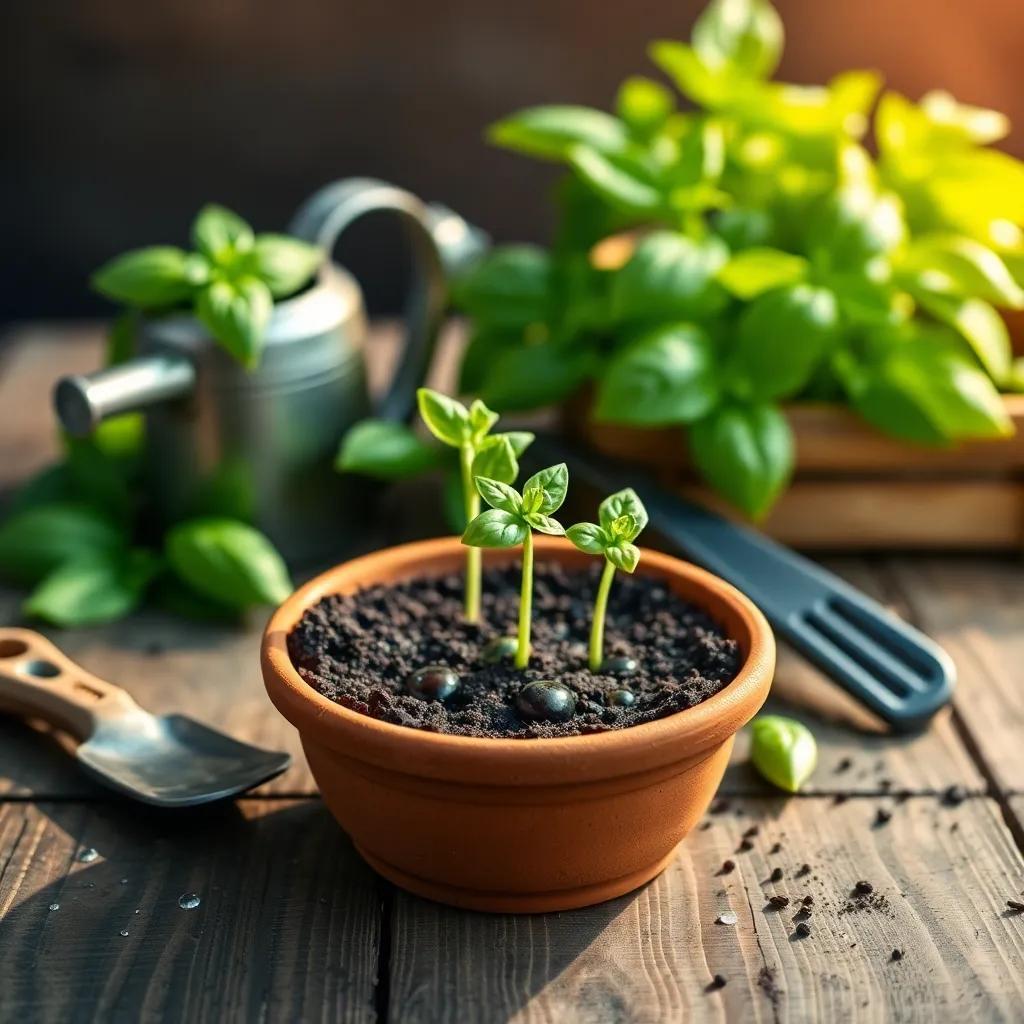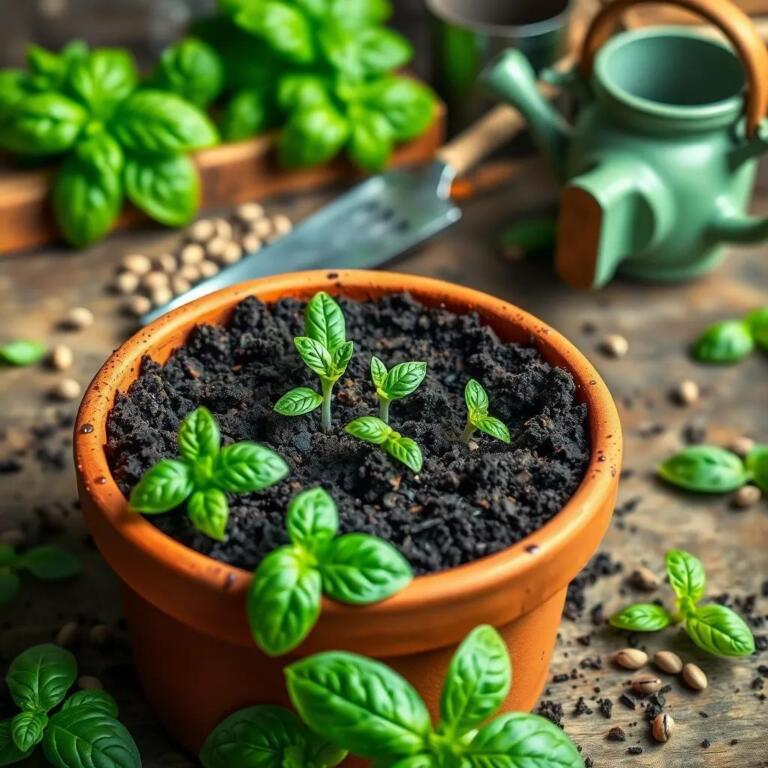have you ever wondered how a tiny basil seed transforms into a fragrant plant that adds magic to your meals? Join me as we explore the captivating world of basil germination, where I’ll share tips and tricks to help you grow your own luscious basil right at home! Let’s dig in and discover the secrets to making your garden thrive!
Understanding the Basil Germination process
ah, the magic of watching a tiny seed transform into a vibrant basil plant! It all starts with the germination process, where the seed begins to wake up after a long nap. Now, let me walk you through what happens during this exciting time.
When a basil seed absorbs water, it starts to swell. This is called imbibition. As the seed drinks up the moisture, it activates enzymes that kickstart metabolic processes. Picture it as the seed’s version of a refreshing morning coffee! Soon enough, the seed coat softens, and the seed is ready to sprout.
The first thing to appear is the radicle—this is the baby root that grows downward, looking for water and nutrients. It’s like the seed is sending out little fingers to dig into the soil! After that,cotyledons,or the first leaves,emerge,poking their way toward the sunlight.
As the seedling grows, it develops true leaves, which are crucial for photosynthesis. This is how the plant starts making its food. Isn’t nature fascinating? Each step of this process is critical for the seedling to grow strong and healthy.
To sum it up, the germination process for basil involves:
- Water absorption (the seed’s coffee!)
- Radicle emergence (the baby root)
- Cotyledon development (first leaves)
- True leaf formation (time to make food!)
Understanding this process is essential for anyone looking to grow their own basil. With the right conditions, you can witness this astonishing transformation yourself!
Key Factors Influencing Basil Seed Germination
Now that we’ve uncovered the how of basil germination, let’s chat about the what—the key factors that can influence how quickly and successfully your seeds sprout.
- Temperature: Basil seeds love warmth! The ideal temperature range for germination is between 70°F and 85°F (21°C and 29°C). If it’s too chilly, those little seeds will take their sweet time to germinate. on the flip side, if it gets too hot, it can be a recipe for disaster.
- Seed Quality: Not all seeds are created equal. Using fresh, high-quality seeds from a reputable source ensures they’re packed with life and ready to sprout. Old or damaged seeds may not germinate well, so it’s worth it to check the expiration date.
- Moisture: Basil seeds need just the right amount of moisture. Too much water can drown them, while too little will leave them high and dry. Keeping the soil consistently moist, but not soggy, is key to giving your seeds the best chance to sprout.
- Light Conditions: Interestingly, basil seeds prefer to germinate in the dark! Covering them with a thin layer of soil initially helps create a cozy atmosphere. Once they sprout, though, they’re all about soaking up the sunshine.
- Soil Quality: Well-draining soil that’s rich in nutrients gives seedlings the best start. Adding organic matter like compost can promote proper aeration and help your basil seeds thrive.
Each of these factors plays a role in how quickly and effectively your basil seeds germinate. By keeping them in the right temperatures, using quality seeds, watering them properly, and providing ideal light and soil conditions, you’ll be well on your way to a bountiful basil harvest! 🌱

Optimal Conditions for Successful Basil Germination
Let’s talk about the optimal conditions that can help your basil seeds sprout successfully! Think of it as creating the perfect cozy surroundings for your tiny seeds to thrive. Here are some key factors to keep in mind:
- Temperature: As I mentioned before, basil seeds are like us— they prefer a warm environment! Aim for a temperature range of 70°F to 85°F (21°C to 29°C). If it’s too cold,they might take longer to germinate,and if it gets too hot,they could get stressed.A consistent warmth is the secret sauce!
- Moisture: Basil seeds need just the right amount of moisture. The soil should feel like a damp sponge—moist but not soggy! I usually check the top inch of soil; if it’s dry,it’s time to water. Keep it evenly moist,and your seeds will appreciate it.
- Light: Initially, basil seeds prefer darkness to germinate. So, lightly covering them with soil is the way to go! Once they sprout, make sure they get 6 to 8 hours of light daily. Natural sunlight is fantastic, but if you’re growing indoors, consider some grow lights to keep them happy.
- Soil Quality: Use a well-draining soil mix rich in organic matter. This helps with proper air circulation and provides nutrients, giving your seedlings what they need to grow strong.
- Container: If you’re starting indoors, choose containers with drainage holes. This prevents water from pooling at the bottom and keeps your seeds safe from rot.
By providing these conditions, your basil seeds will thank you by sprouting beautiful, healthy seedlings. Just imagine the joy of seeing those first little leaves push through the soil!
Common Germination Challenges and Solutions
Even with the best of intentions, you might run into some challenges during basil germination. Don’t worry! I’ve got some tips to help you troubleshoot like a pro.
- Slow or Uneven Germination: If your seeds are taking forever to sprout,it might be a temperature issue. Make sure they’re cozy! Try moving them to a warmer spot or using a seedling heat mat to crank up the warmth.
- Poor Germination Rate: If onyl a few seeds have sprouted, check the quality of your seeds. Always look for fresh seeds with a high germination rate.You might also want to ensure you’re following proper watering practices—too much or too little can hurt.
- Damping-Off: This nasty fungal disease can attack young seedlings, causing them to wilt and die. To prevent this, keep your soil well-draining and avoid overwatering. Let the top inch of soil dry out between waterings, and use sterilized soil mix to keep pathogens at bay.
- Insufficient Light: If your seedlings appear leggy and stretched out, they might be begging for more light. make sure they’re getting that daily dose of sunshine or set up some grow lights to brighten their day!
- Transplant Shock: When moving seedlings to larger pots or your garden, they may experience some shock. To help them adjust, handle them gently and keep them well-watered before and after transplanting.
Remember, gardening is a learning journey! With a little patience and care, these challenges can be overcome, leading to thriving basil plants that you can enjoy in your cooking. Happy gardening! 🌱

